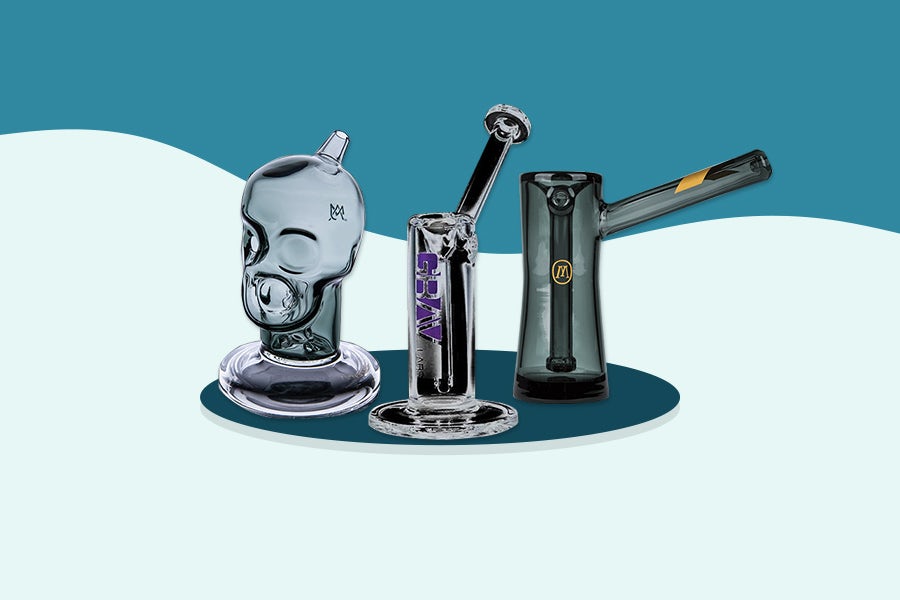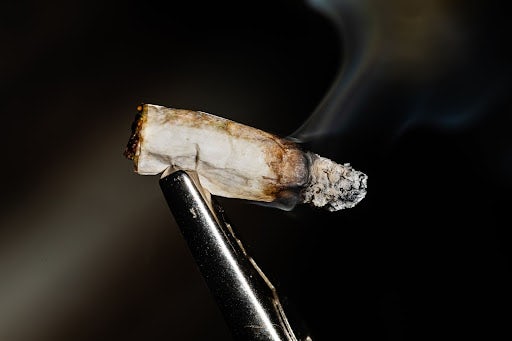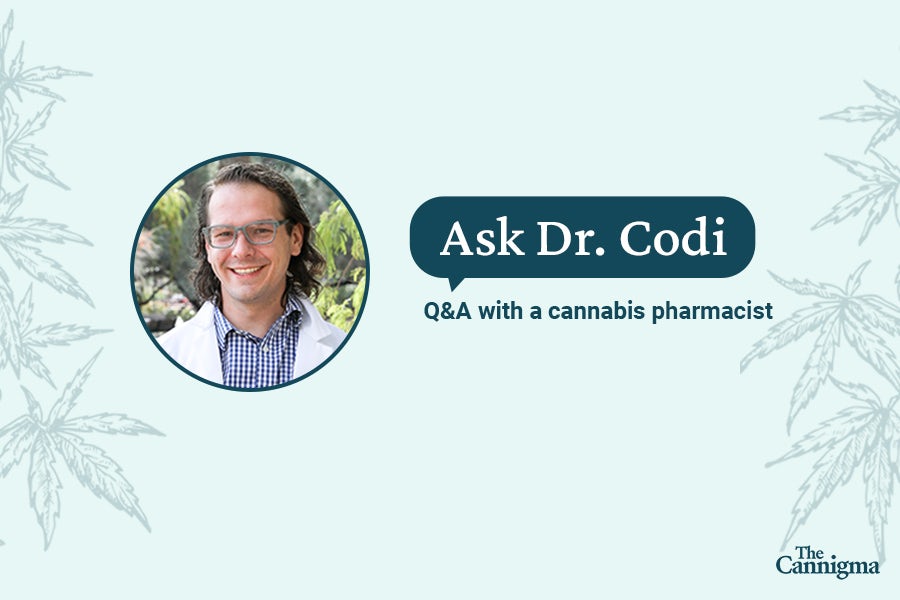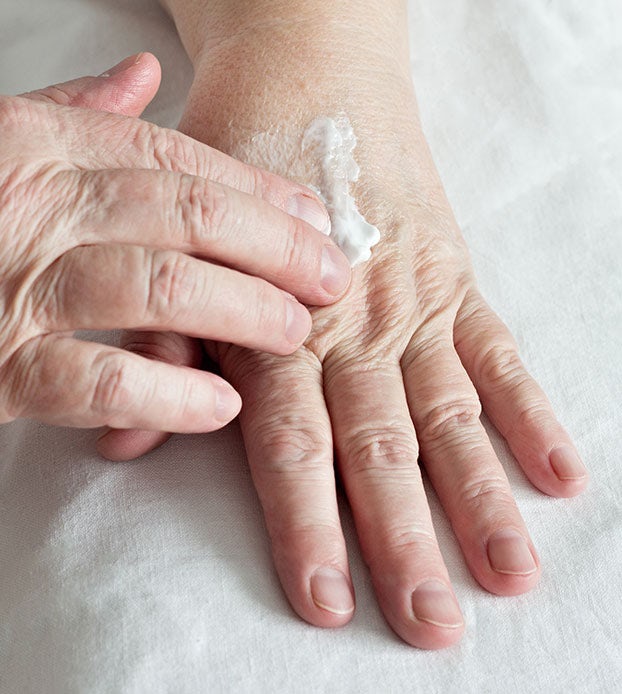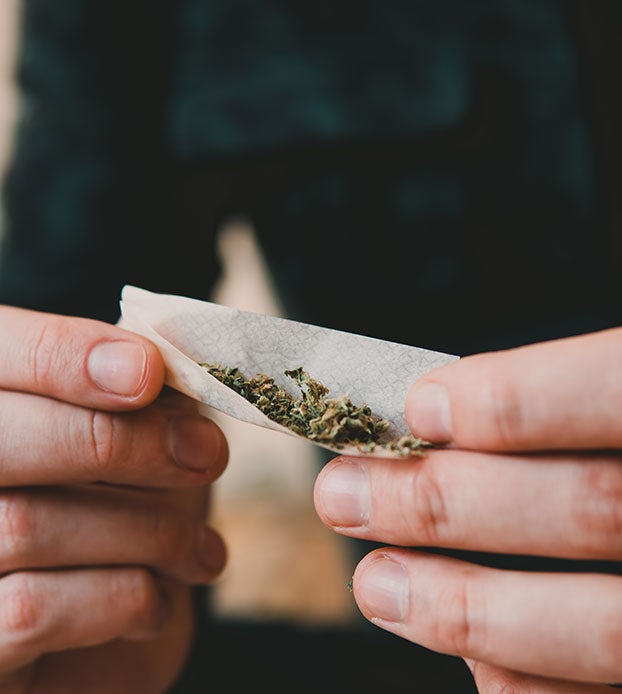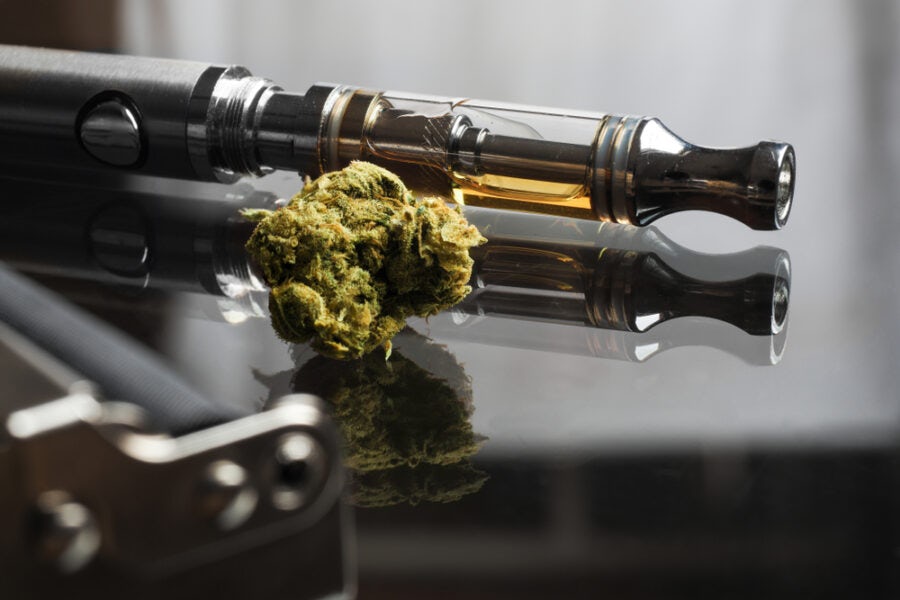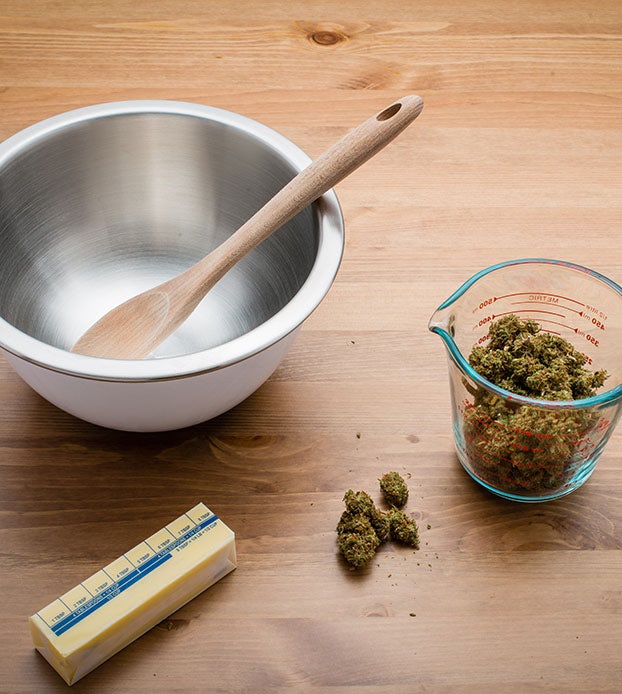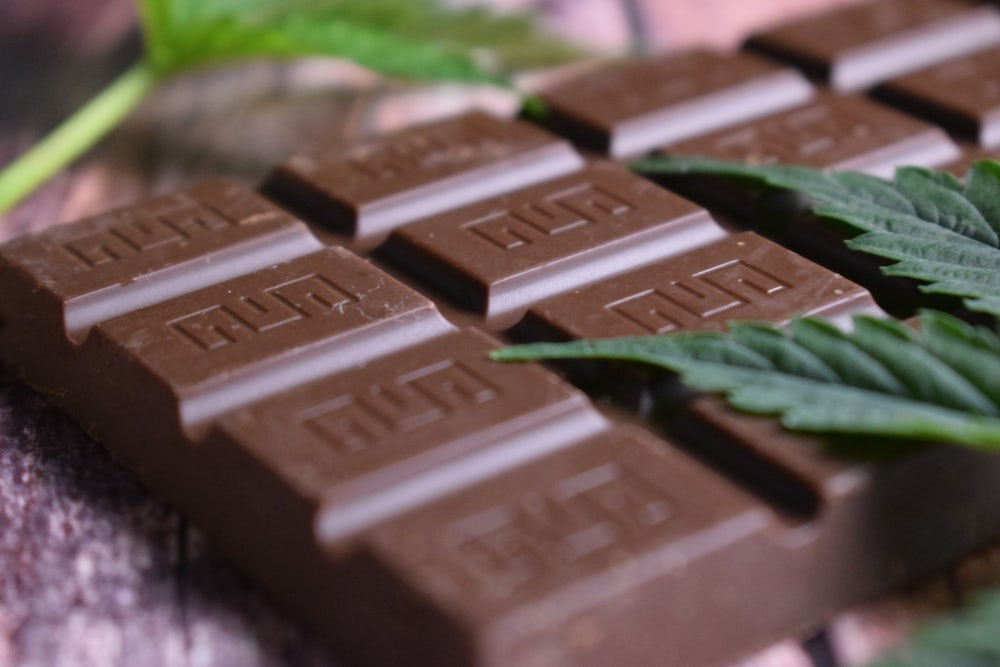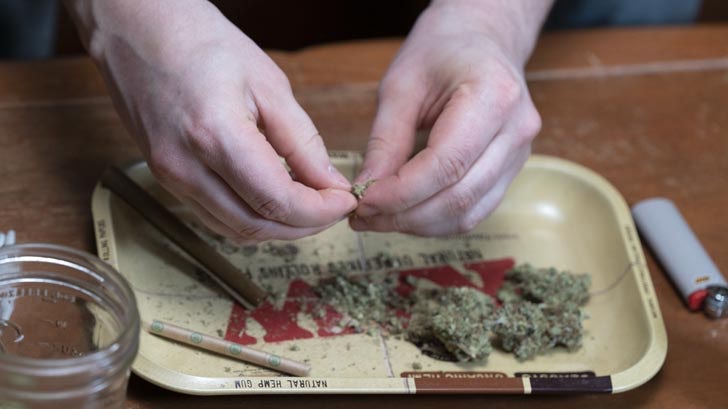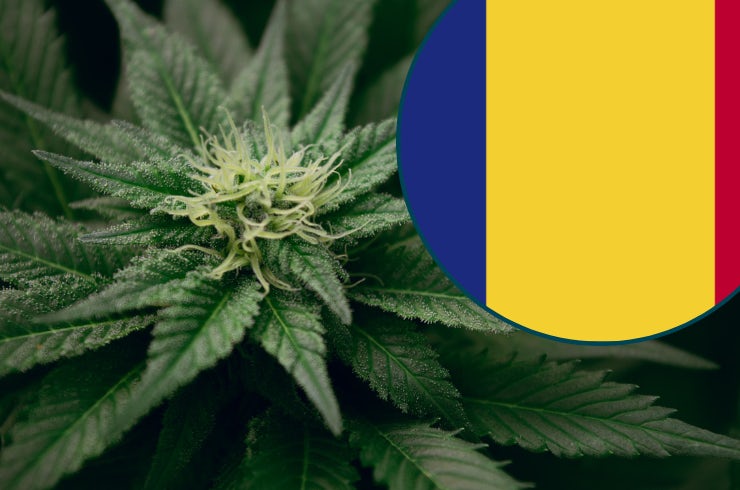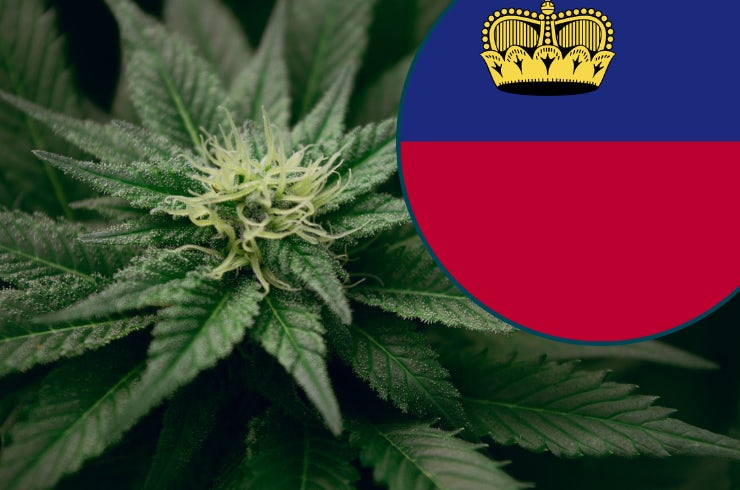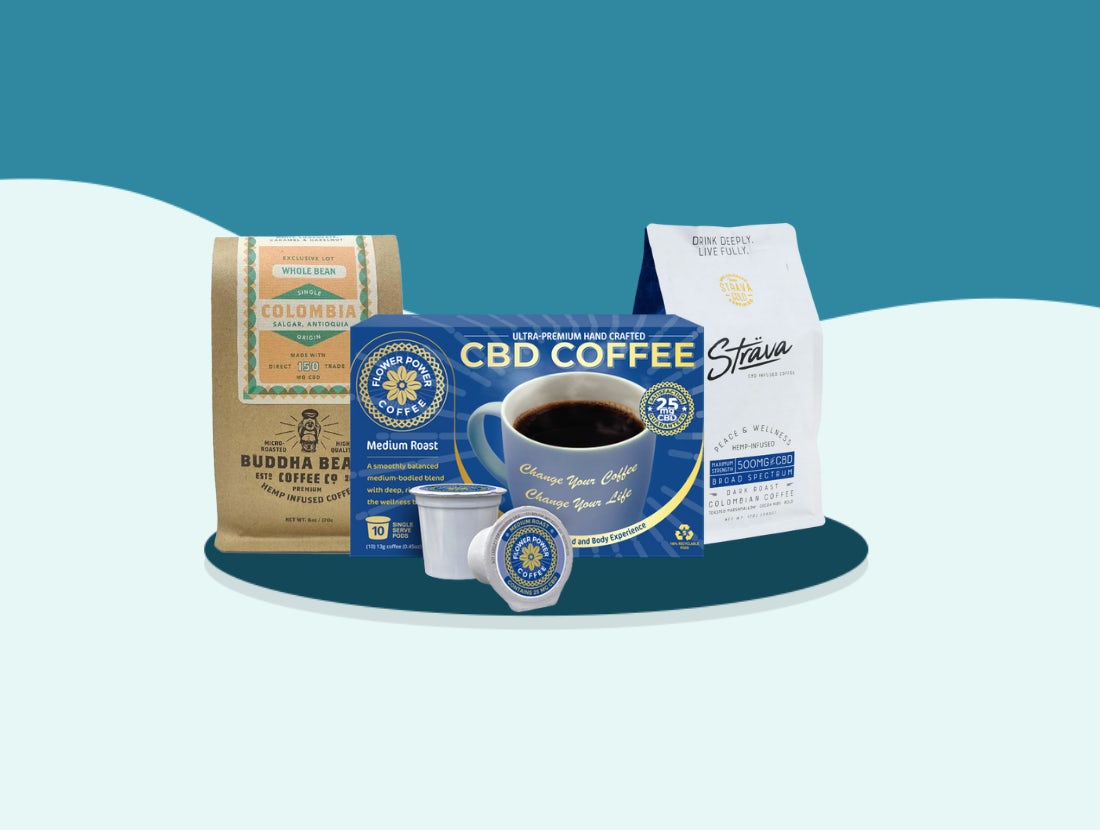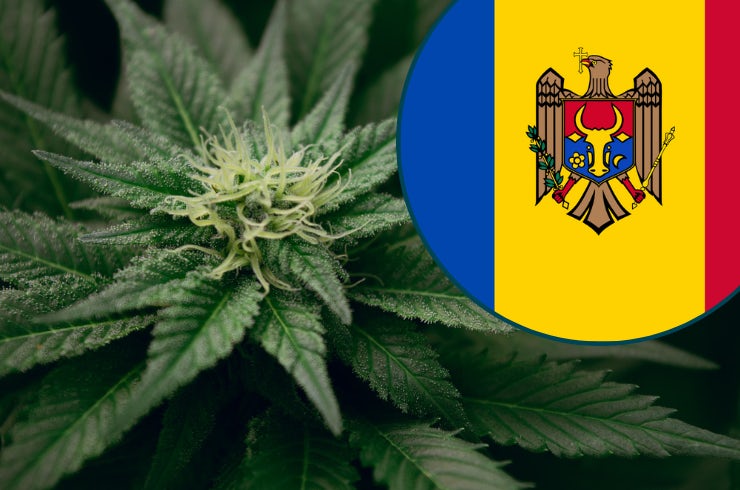There are three primary categories of cannabis consumption methods — via inhalation, oral, and topical — but within those categories are many more types of products. Each has different characteristics and even varying effects.
Inhalation, for instance, has the quickest onset but is often frowned upon by medical professionals because of the potentially harmful effects of smoking and vaping, along with issues with ensuring accurate dosing.
Edibles and other oral consumption methods are much easier to dose and are useful for relieving symptoms over longer periods of time, but they do not have the greatest bioavailability — the amount of the active ingredient that makes it into the bloodstream.
Topicals are easy to use and best suited for localized treatment, but scientific data about how effective they are is lacking.
What is the healthiest way of consuming cannabis? Most people would probably say edibles and oils, but vaporizing dried cannabis flower is a close second.
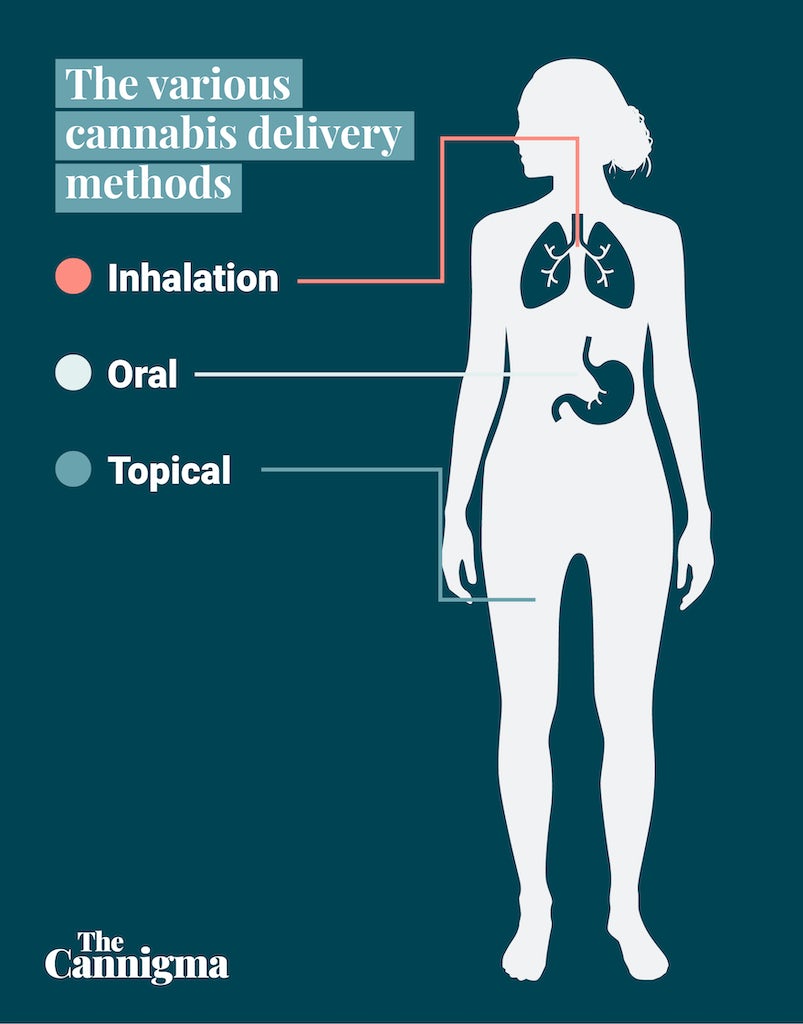
Inhalation: Smoking and vaping
Inhalation is traditionally the most common form of cannabis consumption. There are several ways to inhale cannabis and cannabinoid products, but the two major ones are combustion and vaporization.
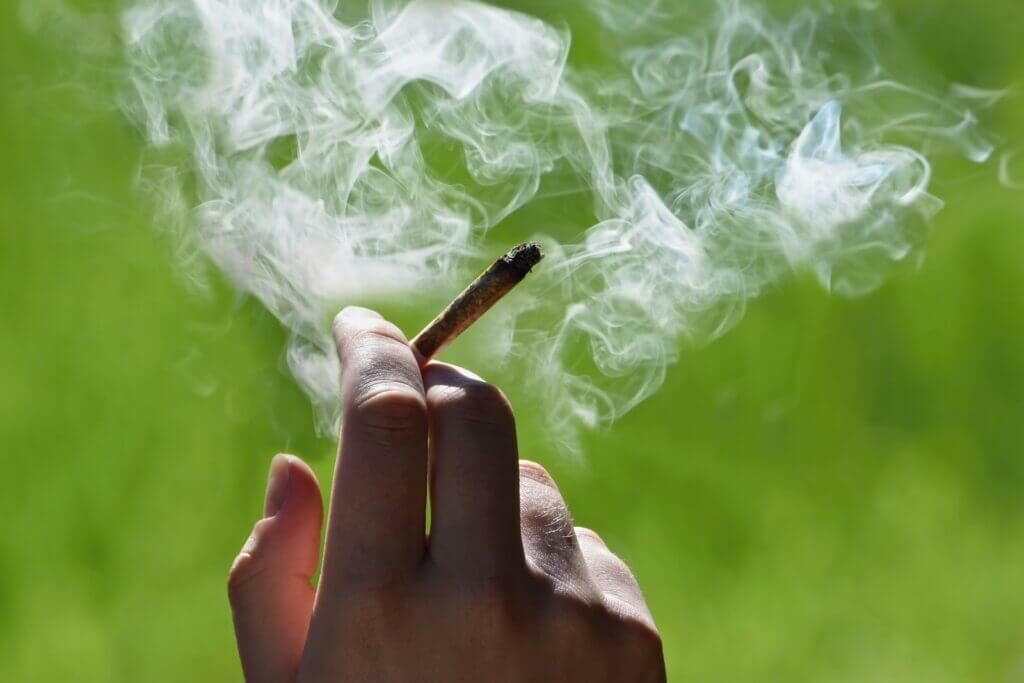
Onset and duration
Inhaling cannabis is generally recognized as the fastest-acting delivery method for cannabis because the THC, CBD or other active ingredients make their way directly to the bloodstream via the lungs. The onset of inhaled cannabis is reported both anecdotally and from research as being anywhere between a few seconds and up to 15 minutes.1
The duration of inhaled cannabis, however, is also among the shortest compared to other methods, lasting between 2-4 hours. For many patients and users, that makes it ideal for treating acute symptoms, although there are many other reasons someone might choose inhalation.
One of the downsides of smoking and vaporizing cannabis, however, is that dosing is almost always imprecise due to natural variations in inhalation depth — and temperature if using a vaporizer. Those variables, particularly those relating to temperature, can alter the chemical composition of the molecules in the cannabis plant — especially terpenes — because their boiling points are not uniform.
Popular ways of inhaling cannabis
Methods for inhaling cannabis can be put into three primary methods: combustion (smoking), inhalation, and aerosol inhaler.
Smoking
The classic way of smoking marijuana is in a joint, but there are many other ways as well.
Joints involve breaking up the dried cannabis flowers and wrapping them in a rolling paper. The joint is then lit and smoked like a cigarette.
Pipes are another popular way of smoking dried cannabis flower. Relatively small, handheld devices, generally made of glass, wood, or metal, pipes have a “bowl” where the broken-up or ground marijuana is placed and lit, a mouthpiece, and a chamber connecting the two. Many pipes also have a “carb,” or small hole near the bowl that is covered with a finger while smoking and then released at the end of the inhalation to clear the pipe of any remaining smoke.
Spliffs, in the American lexicon, are marijuana cigarettes or joints that contain both cannabis flower and tobacco. In Europe and elsewhere, spliff can refer to any type of marijuana cigarette.
Bongs, or water pipes, are pipes that send the cannabis smoke through water before being inhaled. A bong consists of a bowl attached or connected to a stem, the bottom of which is submerged in water at the bottom of a chamber. The mouth is placed at the top of the chamber. Bubblers are small bong-like devices that resemble pipes with a small water chamber.
Vaporization
There are two main ways to vaporize cannabis and cannabis products: heating dried cannabis flower, or heating cannabis extracts and concentrates. With vaporizers, the molecules in the cannabis plant or extract are heated to their boiling points at which point they become vapor, which is inhaled. As opposed to smoking, no plant matter is incinerated by vaporizing.
Dry herb vaporizers are devices that take broken-up or ground dried cannabis flower and heat them between around 325°F/ 163°C to about 430°F / 221°C. Dry herb vaporizers range in size from small handheld devices to much larger tabletop products.
Vape pens are small devices resembling a pen comprised of a cartridge containing a cannabis extract — usually an oil — and a battery and heating element. Vape pens can be reusable or disposable, and generally have a pre-set temperature.
Dab rigs can resemble anything between a bong and a tabletop dry-herb vaporizer. Dab rigs are devices that take cannabis concentrates and heat them to high temperatures to produce vapor that can be inhaled.
Inhalers
Aerosolized metered dose inhalers are medical devices that most people will recognize as being similar to an inhaler used by people with asthma. The active ingredients extracted from the cannabis plant are aerosolized, sometimes with ethanol, and then delivered in precise doses which makes them attractive to medical providers..
Pros and cons of inhalation
While inhalation is still by far the most popular way to consume cannabis, smoking is not for everyone and does carry some risks. In particular, people suffering from lung disorders should generally avoid smoking or vaping cannabis.
There is evidence that cannabis smokers are at a greater risk of negative respiratory symptoms and even severe bronchitis.2 And while there is scant evidence that smoking cannabis poses risks of lung cancer similar to those from cigarettes, some other consequences like damage to cilia in the lungs, thereby harming the body’s ability to fight off certain infections.3
Alongside its downsides, there are reasons why inhalation is preferred by many. Some people report feeling different effects when inhaling cannabis as opposed to other consumption methods, and the heating and incineration of certain cannabinoids can transform them into other molecules like CBN that can have different effects.4
Oral consumption: Edibles, tinctures, oils
Any way of consuming cannabis that goes through your mouth is considered oral consumption. Oral delivery can include edibles like brownies and other infused foods, pills and tablets, ingestible oils, tinctures, and powders.
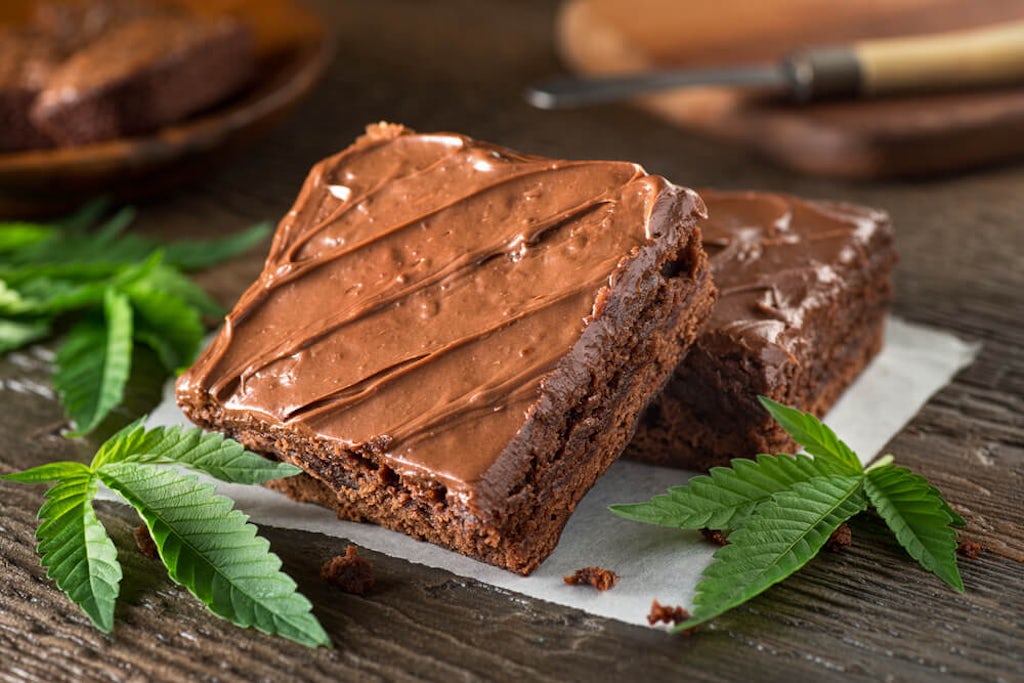
Ingestion vs oromucosal and sublingual
In addition to edibles and other traditional oral delivery methods that are digested through the gastrointestinal tract and are metabolized by the liver, there are also products like tinctures, oils, and sprays that are at least partially absorbed through the oromuscal membranes in the nose and mouth — usually sublingually.
In theory, these products enter the bloodstream directly and bypass the GI tract and liver. There is very little evidence, however, that THC and CBD are well absorbed sublingually, although anecdotal evidence does suggest that some users and patients experience a more rapid onset by using them.
Want to know which cannabis consumption method is right for you? Answer a few simple questions to find out:
Onset and duration
Compared to inhalation, cannabis taken orally — particularly when ingested — has a much longer onset and duration of effects.
Taken orally, the effects of THC can take well over an hour before being felt and up to four hours before hitting peak levels. The effects can last between six and up to 12 hours. The onset of orally ingested CBD is very similar, with effects lasting up to 12 hours.
Because of the long onset time of THC, a common mistake is taking a second dose out of an erroneous or impatient belief that the first dose isn’t working or isn’t as strong as desired. Called dose stacking, this can lead users to consume large amounts of cannabis, leading to unpleasant side effects.
There are many factors that can affect how cannabis and THC is absorbed and the duration and strength of its effects. THC and most cannabinoids are lipophilic, which means that they are easily absorbed by fats.5 THC and most cannabis products, therefore, are best absorbed when consumed with a fatty meal. This is why cooking with cannabis usually calls for infusing it into butter or oils.
Technology is expanding the ways that cannabis can be consumed orally. One of the newer methods, nanoemulsion, involves breaking molecules in cannabis into tiny pieces — called globules — so that it can be easily mixed into beverages and absorbed more quickly by the body.
Sublingual and oromucosal vs ingested
Sublingual cannabis products are often times advertised as having a more rapid onset time — as little as 15 minutes. The scientific evidence of such an effect is not very strong, but anecdotally many users say that it kicks in more quickly.6 The primary challenge that sublingual cannabis products face is that cannabinoids are large molecules, making it more difficult for them to be absorbed into the blood vessels in the mouth and nose.
That is not to say, however, that it is an ineffective method of consuming cannabis and cannabinoids. Sativex, a medicine containing THC and CBD extracts from the cannabis plant used to treat spacity in MS patients, is sold as an oromucosal spray. While designed to be absorbed through the lining of the mouth, it has been suggested that it is actually swallowed and absorbed through the GI tract and liver.7 So while there may be some immediate benefits of sublingual cannabinoids, much of this method will still be delivered orally.
Types of oral cannabis products
Pros and cons of taking cannabis orally
Taking cannabis orally is preferred by many people precisely because it is long lasting, but that may not be ideal for every consumer or patient. For instance, patients with gastrointestinal conditions that negatively affect GI absorption, like Crohn’s disease, may be better off using a different delivery method.
Another disadvantage of taking cannabis orally is that it undergoes first pass metabolism, where a significant amount of the active chemicals are metabolized before they ever reach the bloodstream, thereby reducing the potential effect. Such variables differ from person to person, making it so that two people taking the same dose may experience different effects.
The advantages of oral cannabis consumption, however, are many. It is longer lasting, which is beneficial for patients looking to relieve symptoms throughout the day — or for a full night sleep. It can also be more precise than inhalation because there is no question about how much you are putting into your body. Many people also prefer oral methods because they are far more discreet than smoking or vaping — nobody will be the wiser if you eat a gummy on the train whereas pulling out a vaporizer would probably raise a few eyebrows.
Topical
The number of topical cannabis products on the market seems to be growing by the day. From creams and balms to patches and salves, topical cannabis products are being used for a range of symptoms and conditions.

Dermal vs transdermal
Topical cannabis products fall primarily into one of two categories — dermal and transdermal.
Dermal products and medications, commonly referred to simply as topical, do not penetrate beyond the layers of the skin and their effects are only local.
Transdermal products, on the other hand, are absorbed through the skin, enter the bloodstream, and can have systemic effects throughout the body.8
Because cannabinoids are hydrophobic, or repelled by water, it is difficult for them to penetrate and be absorbed by the skin, however. While various technologies can enhance cannabinoids’ permeability, there is very little data about their efficacy.9
Onset and duration
There is very little clinical data available about dermal and transdermal THC and CBD. Most of the data we have is either extrapolated from research into topical uses of other substances or from animal studies.
That said, the onset of dermal products is generally believed to be quick, and the benefits often do not last beyond a few hours.10
Transdermal delivery is generally slower, which is what makes patches and other transdermal products great for slow release over longer periods of time. They can take hours to start and stop working and last for over 12 hours depending on the product, dose, and formulation.
Popular products
Pros and cons of topical cannabis
While dermal and transdermal cannabis products are very different, they share at least one of the reasons why they might be more attractive to some users: creams and patches can be far less intimidating than a joint or vaporizer.
From there, the differences are quite distinct. For instance, a dermal cannabis product might be more attractive to someone looking for local relief of symptoms.
Likewise, dermal cannabis products will not lead to a positive drug test, which gives them a huge advantage for some users.11 For the same reasons, if a patient is taking other medications that could negatively interact with THC or other cannabinoids, dermal cannabis products can still be safely used.
Conditions that might benefit from both dermal and transdermal cannabis products include various arthritic conditions, localized muscle pain, or any local pain for that matter, and psoriatic and other inflammatory skin conditions.
Other consumption methods
While the above are by far the most common methods for consuming cannabis, they are by no means the only ones.
Rectal suppositories are often used when smoking or swallowing cannabis products is not feasible. Because suppositories do not pass through the digestive tract, they also avoid first pass metabolism and therefore can deliver higher doses more effectively than oral delivery.12
Vaginal suppositories are often used to treat symptoms like menstrual cramps, vaginal pain, pelvic discomfort, and research is being done into their use for the treatment of endometriosis. Some vaginal suppositories are also marketed as intimacy products, with reported benefits in easing pain and discomfort and relieving tension and inflammation.
Nasal cannabis sprays are very similar to oromucosal products in that they are designed to be absorbed through the mucous membranes in the nose.
Eye drops, or ophthalmic cannabis products are being studied for their potential use in relieving glaucoma.
Sources
- MacCallum, C. A., & Russo, E. B. (2018). Practical considerations in medical cannabis administration and dosing. European journal of internal medicine, 49, 12–19. https://doi.org/10.1016/j.ejim.2018.01.004
- Gracie, K., & Hancox, R. J. (2021). Cannabis use disorder and the lungs. Addiction (Abingdon, England), 116(1), 182–190. https://doi.org/10.1111/add.15075
- Tashkin D. P. (2013). Effects of marijuana smoking on the lung. Annals of the American Thoracic Society, 10(3), 239–247. https://doi.org/10.1513/AnnalsATS.201212-127FR
- Hazekamp, A. (2010). Chemistry of Cannabis. In J. Fischedick, M. Díez, A. Lubbe, & R. Ruhaak (Eds.), Chemistry, Molecular Sciences and Chemical Engineering (Vol. 3, pp. 1033–1084). https://doi.org/10.1016/B978-008045382-8.00091-5
- Lucas, C. J., Galettis, P., & Schneider, J. (2018). The pharmacokinetics and the pharmacodynamics of cannabinoids. British journal of clinical pharmacology, 84(11), 2477–2482. https://doi.org/10.1111/bcp.13710
- Itin, C., Domb, A. J., & Hoffman, A. (2019). A meta-opinion: cannabinoids delivered to oral mucosa by a spray for systemic absorption are rather ingested into gastro-intestinal tract: the influences of fed / fasting states. Expert opinion on drug delivery, 16(10), 1031–1035. https://doi.org/10.1080/17425247.2019.1653852
- Itin, C., Domb, A. J., & Hoffman, A. (2019). A meta-opinion: cannabinoids delivered to oral mucosa by a spray for systemic absorption are rather ingested into gastro-intestinal tract: the influences of fed / fasting states. Expert opinion on drug delivery, 16(10), 1031–1035. https://doi.org/10.1080/17425247.2019.1653852
- Godin B., Touitou E. (2012) Dermal and Transdermal Delivery. In: Bhushan B. (eds) Encyclopedia of Nanotechnology. Springer, Dordrecht. https://doi.org/10.1007/978-90-481-9751-4_81
- Lucas, C. J., Galettis, P., & Schneider, J. (2018). The pharmacokinetics and the pharmacodynamics of cannabinoids. British journal of clinical pharmacology, 84(11), 2477–2482. https://doi.org/10.1111/bcp.13710
- Maida, V., & Corban, J. (2017). Topical Medical Cannabis: A New Treatment for Wound Pain-Three Cases of Pyoderma Gangrenosum. Journal of pain and symptom management, 54(5), 732–736. https://doi.org/10.1016/j.jpainsymman.2017.06.005
- Hess, C., Krämer, M., & Madea, B. (2017). Topical application of THC containing products is not able to cause positive cannabinoid finding in blood or urine. Forensic science international, 272, 68–71. https://doi.org/10.1016/j.forsciint.2017.01.008
- Mattes, R. D., Shaw, L. M., Edling-Owens, J., Engelman, K., & Elsohly, M. A. (1993). Bypassing the first-pass effect for the therapeutic use of cannabinoids. Pharmacology, biochemistry, and behavior, 44(3), 745–747. https://doi.org/10.1016/0091-3057(93)90194-x
Sign up for bi-weekly updates, packed full of cannabis education, recipes, and tips. Your inbox will love it.

 Shop
Shop Support
Support